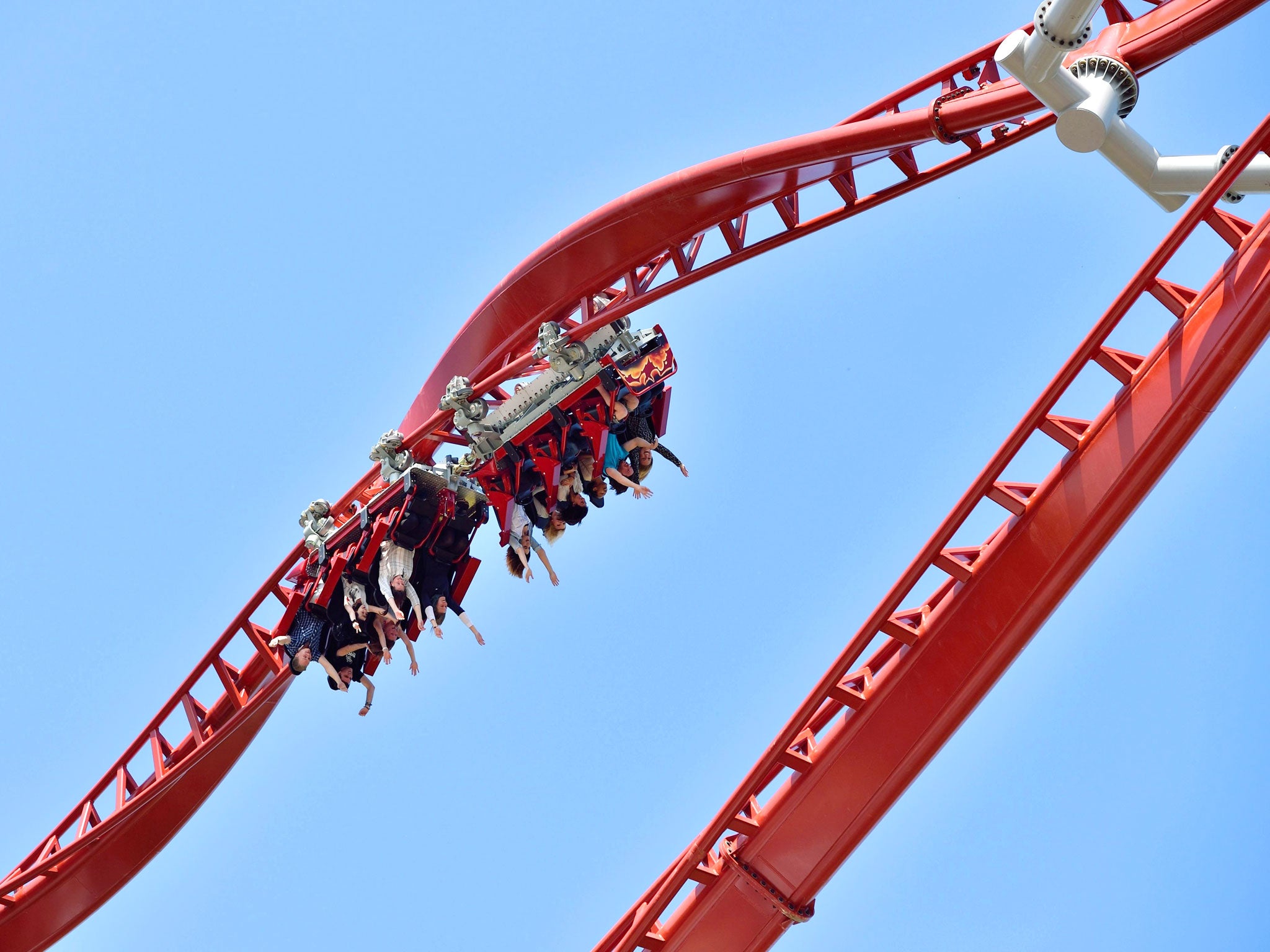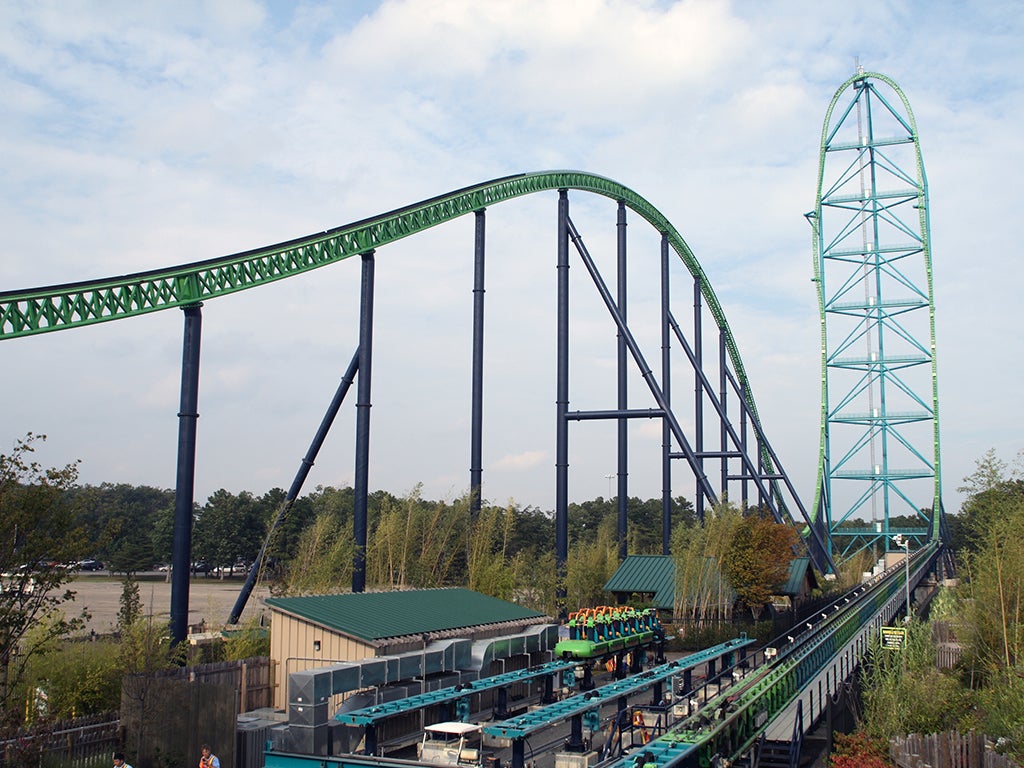The Independent's journalism is supported by our readers. When you purchase through links on our site, we may earn commission.
Theme parks might be branded as 'for kids', but we could all do with a slide or rollercoaster in our office or local pub
When most of us spend the majority of our weeks working, worrying about finances, trying to stay on top of life admin and suffering from increasingly poor mental health, there is nothing more precious than a place intended simply for fun

Your support helps us to tell the story
From reproductive rights to climate change to Big Tech, The Independent is on the ground when the story is developing. Whether it's investigating the financials of Elon Musk's pro-Trump PAC or producing our latest documentary, 'The A Word', which shines a light on the American women fighting for reproductive rights, we know how important it is to parse out the facts from the messaging.
At such a critical moment in US history, we need reporters on the ground. Your donation allows us to keep sending journalists to speak to both sides of the story.
The Independent is trusted by Americans across the entire political spectrum. And unlike many other quality news outlets, we choose not to lock Americans out of our reporting and analysis with paywalls. We believe quality journalism should be available to everyone, paid for by those who can afford it.
Your support makes all the difference.That moment at the top of a rollercoaster – after the slow upwards build, when you’re high above the treeline, dangling, stomach clenched, looking down – is hard to compare to anything else. It’s terrifying and exhilarating, simultaneously desirable and absolutely the last place you would want to be.
Then there’s the drop. The wind hits your face, your stomach feels as if it’s leaping through your body, your cheeks are pushed back into a laugh – or a scream – your whole being is lifted, and despite the rigorous health and safety restraints, for a moment it feels like you’re flying. Then you hit the track again and your whole body is pumping along with your heart and you breathe and laugh – and want to go again. Or not. I can’t understand how some people hate rollercoasters – they are one of my favourite things in the entire world.
Of course, theme parks aren’t all about high adrenaline rides. The experience of utter fear and thrill is a far cry from perusing Miniland at a Legoland resort. The tiny recreations of monuments, sights and everyday life are adorable and awe-inspiring. On face value, it’s just really exciting to see cute recreations of familiar settings, but there’s more to it than that – the creativity and genius that goes into building a tiny version of the London Eye can’t be overlooked. It’s truly inspirational to see such fabulous creations.
And it’s not just Legoland – though Miniland is arguably unrivalled in its design, most parks have themed “lands” that are elaborately played out, through specific food, carefully designed queueing areas and people walking around in full body costumes. You can bet that any resort you visit will be filled with varied and never ending things to discover.
Whether it’s the thrill-inducing rides, the milder water rides, the inventive “worlds” or the over-priced but delicious doughnut and ice-cream combos that draw you in, it’s hard to deny that theme parks offer something for everyone. They are often marketed as family attractions, something for the kids, but they are places that can captivate and entertain at any age.
I don’t feel like I enjoy theme parks any less now that I’m an (admittedly childish) adult – if anything, I enjoy them more. My mood is not as volatile (kids have the tendency to be excited one moment and in a strop the next), I don’t tire at the end of the day and I can appreciate things I didn’t as a kid – the engineering that’s gone into creating a place (not that I know anything about engineering), the small details, the truly fine art and craftsmanship.
And as far as I’m concerned theme parks are a work of art. As Bill Watterson, creator of the cartoon strip Calvin and Hobbes, believed, I couldn’t agree more that there is no such thing as high art and low art – rather creations that either speak to people or don’t. And what could speak to people more than a place created for the sole purpose of having fun?

After all, when most of us spend the majority of our weeks working, worrying about finances, trying to stay on top of life admin and suffering from increasingly poor mental health, there is nothing more precious than escapism. Our cities, towns and villages revolve around practicality – offices for working in, shops for buying things, gyms for exercising. Most of what surrounds us is mundane – it’s pretty wonderful in this context that we have places created for the sole purpose of having fun.
But while some of the elements of enjoyment are easy to recognise as such – good food, fun family rides and the opportunity to take a picture with a lifesize Donald Duck – what is it that is so enticing about rollercoasters? By definition they should evoke sheer terror, yet we absolutely adore them and queue for hours on end for the two-minute scare they provide.
Richard Stephens, a senior lecturer in psychology at Keele University, argues that rollercoasters invoke a good kind of stress, called “eustress” – a word that has the same route as “euphoria”. This kind of stress is not bad for you – rather it is pleasurable and many of us actively seek it out.
Eustress can also explain why we like being scared in other contexts, such as on ghost trains or in live action horror mazes. It makes sense that we must all have different ways of seeking this kind of good stress – which is why some people love rollercoasters and some people can’t stand them. I’m a big fan of rollercoasters but the thought of scuba diving absolutely terrifies me. But for others I imagine this is a “eustressful” experience.
For the ultimate thrillseeker, the fastest rollercoaster in the world is currently the Formula Rossa at Ferrari World in Abu Dhabi, which reaches an eye-watering 150mph. The second fastest, Kingda Ka at Six Flags Great Adventure in New Jersey, is also the world’s tallest, at 456ft. To put that into some perspective, Big Ben in London stands shorter at 320ft.
But Kingda Ka will not hold its title for long, as a new coaster, Skyscraper, is set to open in Florida in 2020 and will reach 500ft, plus have the steepest drop of any rollercoaster in the world.
And lastly the longest rollercoaster, the Steel Dragon 2000, at Nagashima Spa Land in Japan is a whopping 8,133ft. It is the only existing rollercoaster to break the 8,000ft threshold, and it lasts for a whole four minutes.
With rides becoming increasingly complex and impressive, it’s fascinating to see where things all started. The first commercial rollercoaster in the world, Switchback Railway, opened in 1884 in Coney Island, New York. It kickstarted the growth of attractions in the US, and before long Coney Island housed a few similar rides. The oldest acknowledged theme park was also located in the US: Santa Claus Land opened in Indiana in 1935, and included many rides themed around the big man in red.
If you’d like a taste of an ancient theme park, the oldest still in operation can be found in Klampenborg, Denmark. Bakken opened in 1583 and has more than 150 attractions, including a wooden rollercoaster built in 1932. Denmark is also the home of Lego, and the original Legoland Park – so a heaven for theme park fans.
In the UK we’ve also been breathing life into old theme parks, such as Dreamland in Margate. First opened in 1880 and popular all the way through to the 1990s, it was closed in 2003 and set to become a residential area. But after local residents campaigned to restore and open Dreamland instead, it was brought back and soon had a £25m revamp.
It now has a concert venue, seaside pub and rooftop rum shack, and new rides are being introduced to sit alongside the restored vintage ones. According to its Wikipedia page, it’s intended to be a “working museum of vintage funfair rides”. And it’s changing the fortunes of the surrounding small seaside town in Kent.
Another intriguing destination is an unexpected one. Nestled deep in the Italian woods, Ai Pioppi boasts a colourful range of rides – none of which are powered by electricity. Instead, riders push, pedal and swing – but we’re not talking playground-style attractions here; we’re talking full-on Ferris wheels and rollercoasters. But perhaps even more impressive than the park’s eco-credentials is its founder, Bruno Ferrin, who has been building the park himself since the late 1960s. He started by adding a few slides to accompany his restaurant – and it grew from there.
Around the world there are a whole host of niche theme parks – those interested can visit Hello Kitty’s castle in Japan, unearth mud at Diggerland in various locations across the UK and US and view a host of farting and vomiting statues at BonBon-Land in Zealand, Denmark.
Of course, obscurities aside, you’re still guaranteed to have fun at your local attraction. And increasingly we’re seeing theme park culture enter our day-to-day – less traditional workplaces are starting to install slides and ball pits and Penn State station in New York is considering adding a rollercoaster alongside it’s shops and subway platforms.
It would do us all some good to get out the office and have some fun for the sake of fun – or even better we could incorporate theme park rides and attractions into our daily lives.
Join our commenting forum
Join thought-provoking conversations, follow other Independent readers and see their replies
Comments